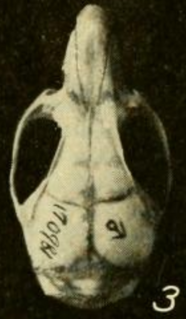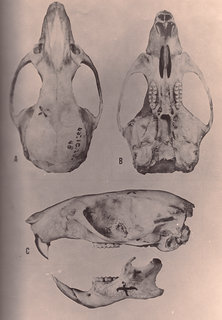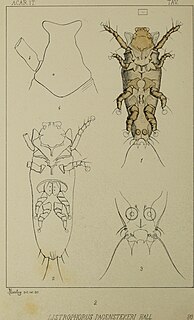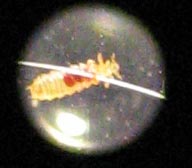
Oryzomys nelsoni is an extinct rodent of María Madre Island, Nayarit, Mexico. Within the genus Oryzomys of the family Cricetidae, it may have been most closely related to the mainland species O. albiventer. Since its first description in 1898, most authors have regarded it as a distinct species, but it has also been classified as a mere subspecies of the marsh rice rat (O. palustris).
Sommer's Sulawesi rat is a species of rodent in the family Muridae from Sulawesi. It is the only species in the monotypic genus Sommeromys and was described by Musser & Durden in 2002.

Oryzomys couesi, also known as Coues' rice rat, is a semiaquatic rodent in the family Cricetidae occurring from southernmost Texas through Mexico and Central America into northwestern Colombia. It is usually found in wet habitats, such as marshes, but also lives in drier forests and shrublands. Weighing about 43 to 82 g, O. couesi is a medium-sized to large rat. The coarse fur is buff to reddish above and white to buff below. The hindfeet show some specializations for life in the water, such as reduced ungual tufts of hair around the digits. It has 56 chromosomes. There is much geographic variation in size, proportions, color, and skull features. Oryzomys couesi is active during the night and builds nests of vegetation that are suspended among reeds about 1 m (3.3 ft) above the ground. It is an excellent swimmer and dives well, but can also climb in vegetation. An omnivore, it eats both plant and animal food, including seeds and insects. It breeds throughout the year; females give birth to about four young after a pregnancy of 21 to 28 days. The species may be infected by several different parasites and by two hantaviruses.

Oryzomys is a genus of semiaquatic rodents in the tribe Oryzomyini living in southern North America and far northern South America. It includes eight species, two of which—the marsh rice rat (O. palustris) of the United States and O. couesi of Mexico and Central America—are widespread; the six others have more restricted distributions. The species have had eventful taxonomic histories, and most species were at one time included in the marsh rice rat; additional species may be recognized in the future. The name Oryzomys was established in 1857 by Spencer Fullerton Baird for the marsh rice rat and was soon applied to over a hundred species of American rodents. Subsequently, the genus gradually became more narrowly defined until its current contents were established in 2006, when ten new genera were established for species previously placed in Oryzomys.

Oryzomys gorgasi, also known as Gorgas's oryzomys or Gorgas's rice rat, is a rodent in the genus Oryzomys of family Cricetidae. First recorded in 1967, it is known from only a few localities, including a freshwater swamp in the lowlands of northwestern Colombia and a mangrove islet in northwestern Venezuela. It reportedly formerly occurred on the island of Curaçao off northwestern Venezuela; this extinct population has been described as a separate species, Oryzomys curasoae, but does not differ morphologically from mainland populations.

The marsh rice rat is a semiaquatic North American rodent in the family Cricetidae. It usually occurs in wetland habitats, such as swamps and salt marshes. It is found mostly in the eastern and southern United States, from New Jersey and Kansas south to Florida and northeasternmost Tamaulipas, Mexico; its range previously extended further west and north, where it may have been a commensal in corn-cultivating communities. Weighing about 40 to 80 g, the marsh rice rat is a medium-sized rodent that resembles the common black and brown rat. The upperparts are generally gray-brown, but are reddish in many Florida populations. The feet show several specializations for life in the water. The skull is large and flattened, and is short at the front.

Transandinomys talamancae is a rodent in the genus Transandinomys that occurs from Costa Rica to southwestern Ecuador and northern Venezuela. Its habitat consists of lowland forests up to 1,500 m (5,000 ft) above sea level. With a body mass of 38 to 74 g, it is a medium-sized rice rat. The fur is soft and is reddish to brownish on the upperparts and white to buff on the underparts. The tail is dark brown above and lighter below and the ears and feet are long. The vibrissae (whiskers) are very long. In the skull, the rostrum is long and the braincase is low. The number of chromosomes varies from 34 to 54.

Oryzomys antillarum, also known as the Jamaican rice rat, is an extinct rodent of Jamaica. A member of the genus Oryzomys within the family Cricetidae, it is similar to O. couesi of mainland Central America, from where it may have dispersed to its island during the last glacial period. O. antillarum is common in subfossil cave faunas and is also known from three specimens collected live in the 19th century. Some historical records of Jamaican rats may pertain to it. The species probably became extinct late in the 19th century, perhaps due to the introduction of the small Asian mongoose, competition with introduced rodents such as the brown rat, and habitat destruction.

Oryzomys albiventer is a rodent in the genus Oryzomys of family Cricetidae from interior western Mexico, in the states of Jalisco, Guanajuato, and Michoacán. First described in 1901 as a separate species, it was later lumped under O. couesi and the marsh rice rat (O. palustris) until it was reinstated as a species in 2009. It differs from neighboring Oryzomys populations in size and measurements and is a large, brightly colored species with a long tail and robust skull and molars. Its range has been much impacted by agricultural development, but isolated populations are thought to persist.
Hoplopleura oryzomydis is a sucking louse that is known from the southern United States, Nicaragua, Panama, and Venezuela. It is known from several oryzomyine rodents: the marsh rice rat, O. couesi, Handleyomys alfaroi, Transandinomys talamancae, Melanomys caliginosus, and Sigmodontomys alfari.
Ctenophthalmus pseudagyrtes is a species of fleas in the family Hystrichopsyllidae. It is widespread in North America, east of the Rocky Mountains, and is found mainly on small mammals. In Missouri, it has been recorded on the Virginia opossum, northern short-tailed shrew, eastern mole, raccoon, eastern chipmunk, Florida woodrat, prairie vole, woodland vole, white-footed mouse, including nests, marsh rice rat, hispid cotton rat, house mouse, and brown rat. Hosts recorded in Tennessee include the Virginia opossum, northern short-tailed shrew, eastern mole, eastern chipmunk, southern red-backed vole, rock vole, woodland vole, white-footed mouse, golden mouse, hispid cotton rat, marsh rice rat, and house mouse.
Epitedia wenmanni is a species of flea in the family Hystrichopsyllidae. It is common throughout North America and associated mainly with Peromyscus (deermice), although many other hosts have been recorded. In Missouri, it has been found on the cat, white-footed mouse, including nests, marsh rice rat, and western harvest mouse. Hosts recorded in Tennessee include the northern short-tailed shrew, eastern chipmunk, southern red-backed vole, white-footed mouse, and golden mouse.
Stenoponia americana is a species of large flea in the family Hystrichopsyllidae. It is widespread in North America east of the Great Plains and is found mainly on rodents, notably deermice (Peromyscus) and voles (Microtus). In Missouri, it has been recorded on the fox squirrel, brush mouse, cotton mouse, prairie vole, woodland vole, and white-footed mouse. Hosts recorded in Tennessee include the northern short-tailed shrew, woodland vole, white-footed mouse, hispid cotton rat, marsh rice rat, and house mouse. In South Carolina, recorded hosts include the cotton mouse, hispid cotton rat, and marsh rice rat.
Polygenis gwyni is a flea that commonly infects the hispid cotton rat in the southern United States; it is also frequently found on other species ecologically associated with the cotton rat. Hosts recorded in South Carolina include the cotton rat as well as the Florida woodrat, cotton mouse, marsh rice rat, and brown rat.
Hoplopleura hirsuta is a sucking louse that is known from North, Central, and South America. Its main hosts are cotton rats such as Sigmodon hispidus, Sigmodon ochrognathus, Sigmodon peruanus, and Sigmodon arizonae.

Amblyomma maculatum is a species of tick in the genus Amblyomma. Immatures usually infest small mammals and birds that dwell on the ground; cotton rats may be particularly favored hosts. Some recorded hosts include:
Euschoengastia setosa is a mite in the genus Euschoengastia of the family Trombiculidae that mostly parasitizes small rodents and lagomorphs. Recorded hosts include marsh rice rat in Georgia; the deermouse in Tennessee; and the eastern red squirrel in North Carolina, among others.
Eutrombicula batatas is a species of chigger.

Listrophoridae is a family of mites in the suborder Psoroptidia of the order Sarcoptiformes. The family contains small, long mites specialized for grasping the hairs of mammals. North American genera include:









